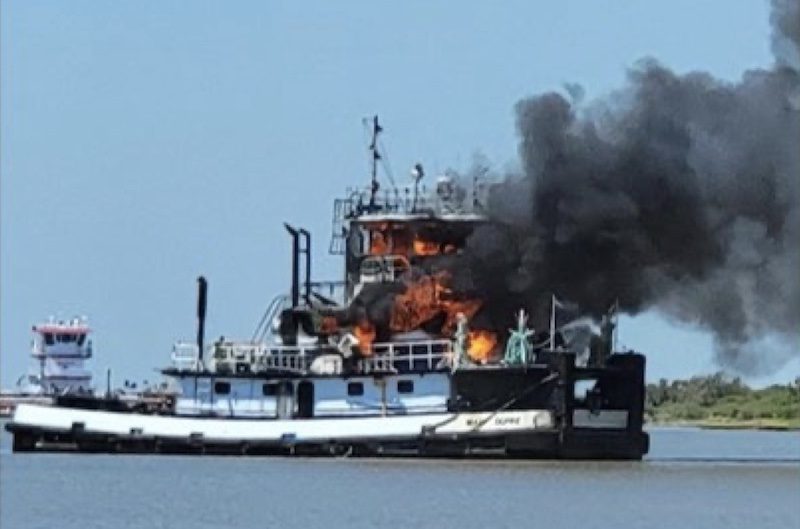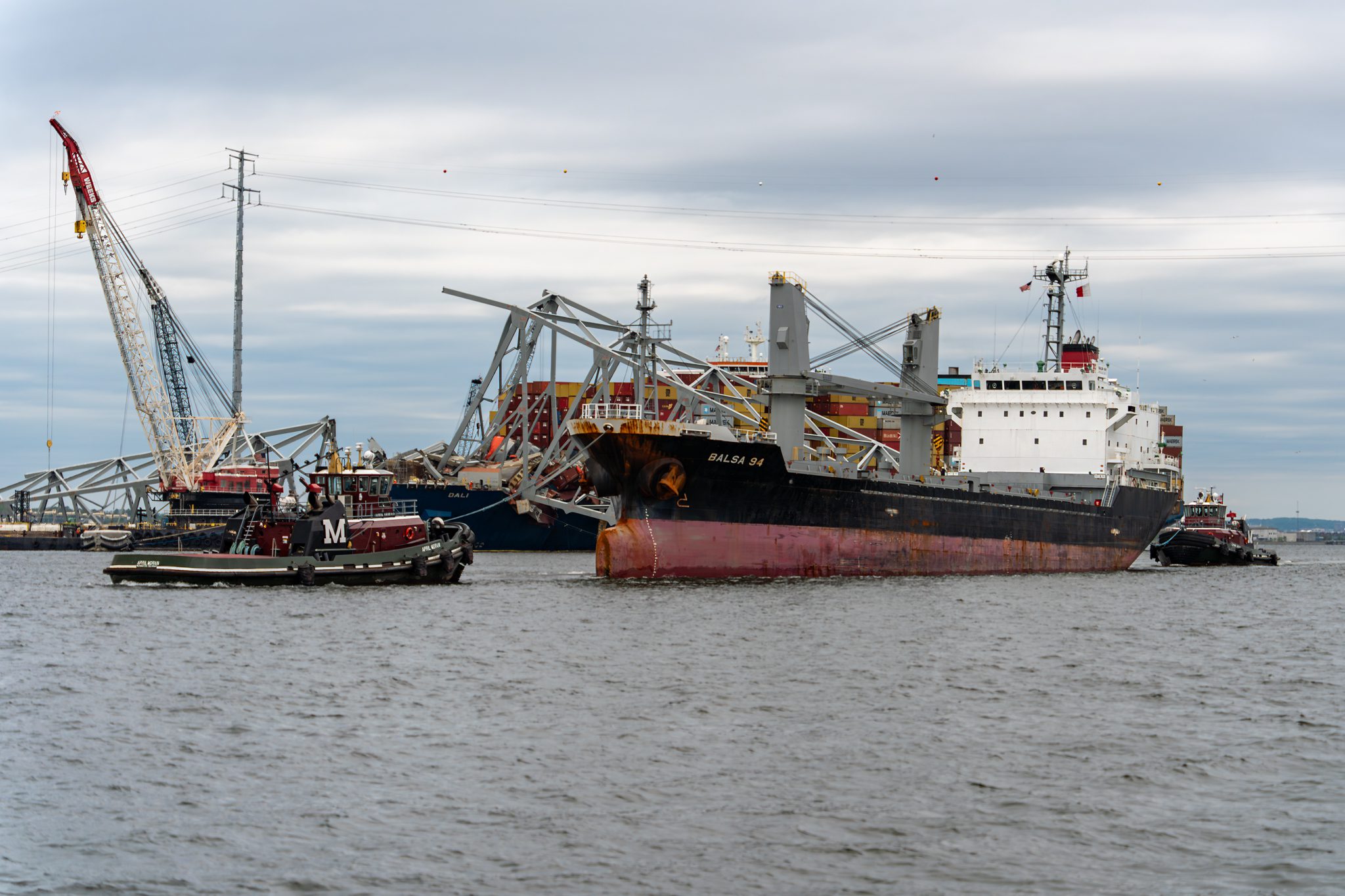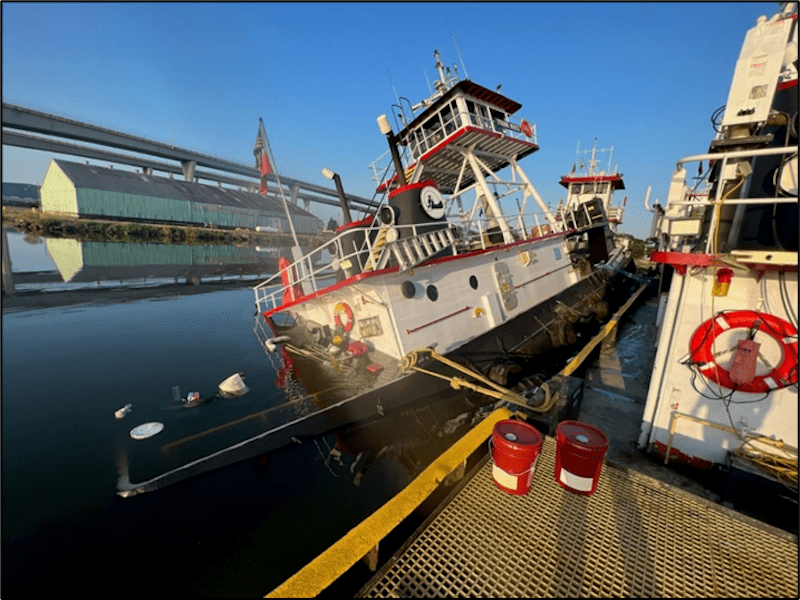Cracks in a muffler and the use of combustible materials in accommodation spaces caused a fire on a towing vessel last year on the Gulf Intracoastal Waterway near Freeport, Texas, the National Transportation Safety Board (NTSB) said Thursday.
On June 25, 2022, the towing vessel named Mary Dupre departed Port Comfort, Texas, for Houston, pushing a single barge loaded with bio-diesel fuel. The fire broke out the following day. No injuries were reported, and nearby Good Samaritan towing vessels retrieved the barge, extinguished the fire, and evacuated the crewmembers. However, the Mary Dupre was a total loss, with damages estimated at $1 million.
The fire started behind wood-paneled bulkheads in the pilot’s stateroom, which was located between the stacks containing engine exhaust mufflers and piping. Cracks in the welds of the muffler inside the starboard stack allowed hot exhaust gases to escape into the stack area.
During its investigation, the NTSB discovered that a disconnected exhaust blanket on a muffler left a section of the muffler uninsulated, which allowed heat to radiate into the stack area. This, combined with leaking exhaust gases from a crack in the muffler, likely raised the temperature in the stack area. The crew was unaware of cracks or disconnected blanket due to the size of the stack preventing personnel from entering the space, according to NTSB.
The NTSB determined that the fire on the Mary Dupre was caused by undetected cracks in the starboard muffler, which allowed exhaust gases to ignite wooden structures in the accommodation space. Contributing to the damage was the use of combustible materials in the joinery, outfitting, and furnishings.
“Engine and other machinery exhaust systems generate heat—which can radiate from exhaust components—and are potential ignition sources,” the report said. “These systems often run through tight spaces that are difficult to access and inspect and are often located near materials or equipment that obstruct entry and direct observation. It is good practice to include these areas in periodic fire safety inspections. When conducting inspections of these systems, vessel owners and operators should consider using handheld equipment—such as inspection mirrors, video equipment, or thermal imaging equipment—to detect deficiencies.”
The NTSB’s investigation report can be found here.
Unlock Exclusive Insights Today!
Join the gCaptain Club for curated content, insider opinions, and vibrant community discussions.

 Join The Club
Join The Club













